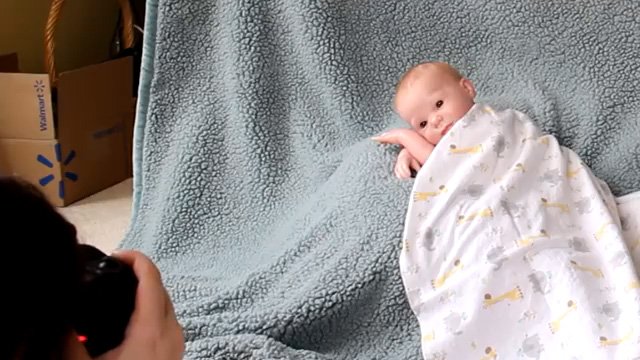Rae offers a comprehensive guide on capturing realistic photos of reborn dolls, a long-awaited tutorial filled with valuable insights. Here’s a step-by-step breakdown to help enthusiasts achieve professional-quality photos using high-end cameras and smartphones.
Preparing for the Shoot
Start by gathering the essentials:
- Doll: The subject of your photos, whether a sleeping or awake baby.
- Camera: A DSLR like the Canon EOS 60D, a simple point-and-shoot, or even a smartphone with a good camera.
- Backdrop Stand: Purchased affordably online or improvised with chairs.
- Backdrop: A large blanket to cover a significant area.
- Props: Cute headbands, additional blankets for swaddling, pillows, a boppy (optional), stuffed animals, and possibly a basket for added charm.
Setting Up Your Photo Area
Backdrop and Props:
- Lay out a blanket as your backdrop.
- Arrange pillows or a boppy to support the doll and avoid head flopping, which can create a double chin effect.
Lighting:
- Choose a location with ample natural lighting to capture the most realistic colors and details.
- Charge your camera and phone, ensuring you have sufficient battery life for an extended shoot.
Posing and Capturing the Perfect Shot
Posing the Doll:
- Use rolled-up towels or smaller pillows to adjust the doll’s position.
- Pose awake dolls like William in alert positions and sleeping dolls like Eli with their heads supported.
- Experiment with different angles: full body, waist-up, chest-up, headshots, and extreme close-ups.
Taking the Photos:
- Shoot with both your camera and smartphone to compare results.
- Utilize the phone’s camera for equally impressive photos, focusing on different angles and natural light to enhance the image.
Detail Shots:
- Capture the intricate details of the doll: feet, hands, facial features, and hair.
Additional Tips
- Cloth Concealment: Ensure the doll’s cloth body parts are hidden for a more realistic appearance.
- Creative Angles: Explore various angles to find the most flattering positions.
- Background Blur: Notice the difference in background blur between camera and phone shots, using it to your advantage for depth and focus.




